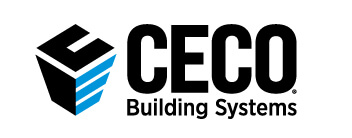Emerging Sustainability Issues: Declare Labels and the Red List
Posted on October 20, 2020 by Greg HekmanArchitects, engineers, and owners are increasingly specifying or calling for metal building systems or components to meet the requirements of green building or sustainability programs. The best-known and most common program that articulates those requirements is the LEED® program initiated by the US Green Building Council (USGBC). In that program, points are earned in different categories by meeting specific criteria for the design and construction of a building. Successful projects are then independently certified at different levels: certified, silver, gold, or platinum.
In addition to LEED®, there are other programs that promote sustainable design with specific building requirements. One such program has been developed by the International Living Futures Institute (ILFI™) known as the Living Building Challenge (LBC). This program is similar to LEED® in that it has different categories of requirements, some which relate directly to materials and products, including metal building systems and components. Hence, the LBC contains a separate certification for products known as Declare.
What is Declare?
The Declare certification seeks the answers to three fundamental questions.
1. Where does a product come from?
2. What is it made of?
3. Where does it go at the end of its life?
In general, the Declare program functions as a means for manufacturers to be completely transparent and provide data on the ingredients, processes, impacts, and end of life options for the things that they produce. This is helpful to everyone involved in the design and construction of buildings (architects, engineers, contractors, erectors, owners, etc.) since it provides reliable information on the makeup and impacts of using a particular product or material compared to others. Ideally, the information is developed not solely by the manufacturer, but by an independent third party (i.e. testing agency) who can verify the results.
What is the Red List?
Related to disclosing the ingredients in construction materials, ILFI™ maintains a “Red List” of chemicals that are considered undesirable for use in buildings. Those chemicals are known to either pollute the environment, create toxic concentrations in the food chain, or directly harm construction and factory workers due to repeated exposure. Under LBC green building programs, specific credit is awarded for using products that are free of the chemicals that are on the Red List.
The Declare Label manufacturers that have gone through the process of identifying and documenting the required information can apply to have a “Declare Label” attached to their products. This label succinctly and precisely identifies the required information for a specific product, and informs users of its status regarding the Red List in one of three options:
• LBC Red List Free: To achieve this status, 100% of product ingredients plus residuals must be disclosed if they are present at or above 100 ppm (0.01%) in the final product. All those ingredients must not contain any Red List chemicals.
• LBC Red List Approved: In this category, the product may contain one or more Red List chemicals if they fall under an existing, published LBC Temporary Exception. As such, compliance is based on reliance to such a Temporary Exception.
• Declared: The most basic status is that the products are simply “Declared.” In this case 100 percent of product ingredients plus residuals present at or above 100ppm (0.01%) are disclosed but may contain one or more Red List chemicals that are not covered by an existing exception. Before a “Declared” product can be used on a Living Building Challenge project, additional product research and vetting will be required to locate a fully compliant product if one exists.
It is worth pointing out that the LEED® program recognizes the Declare label and the Red List as methods with which to show compliance with certain LEED® credits.
In applying these programs to metal buildings and components, there are in fact products that have been third party tested and have earned Declare labels at different levels regarding the Red List. Therefore, if a project requires such documentation, it is best to work directly with a manufacturer to decide which specific products and components carry the certification to show compliance.
To find out more about the Living Building Challenge and the Declare program, visit the ILFI website about Declare. To find out more about how to provide sustainable products in your current or next project contact your local Ceco representative.


